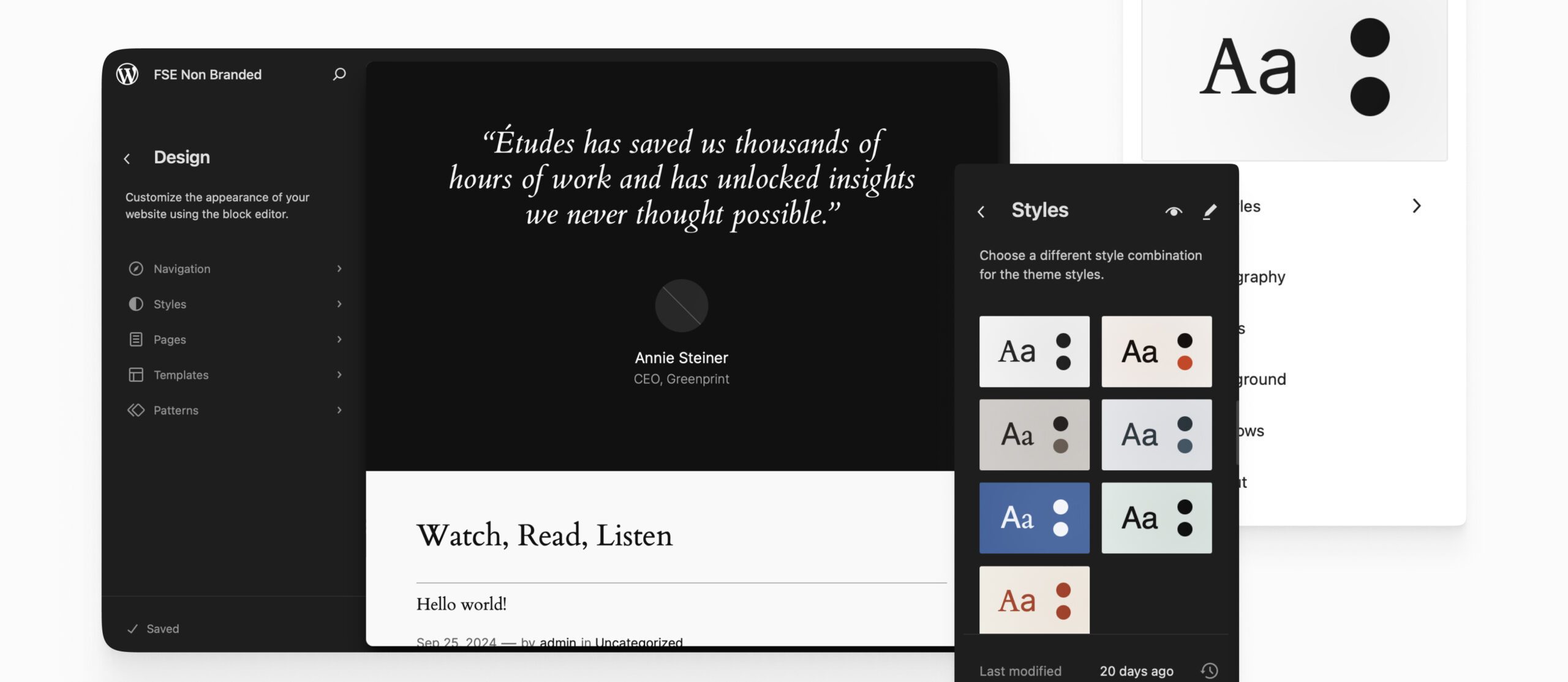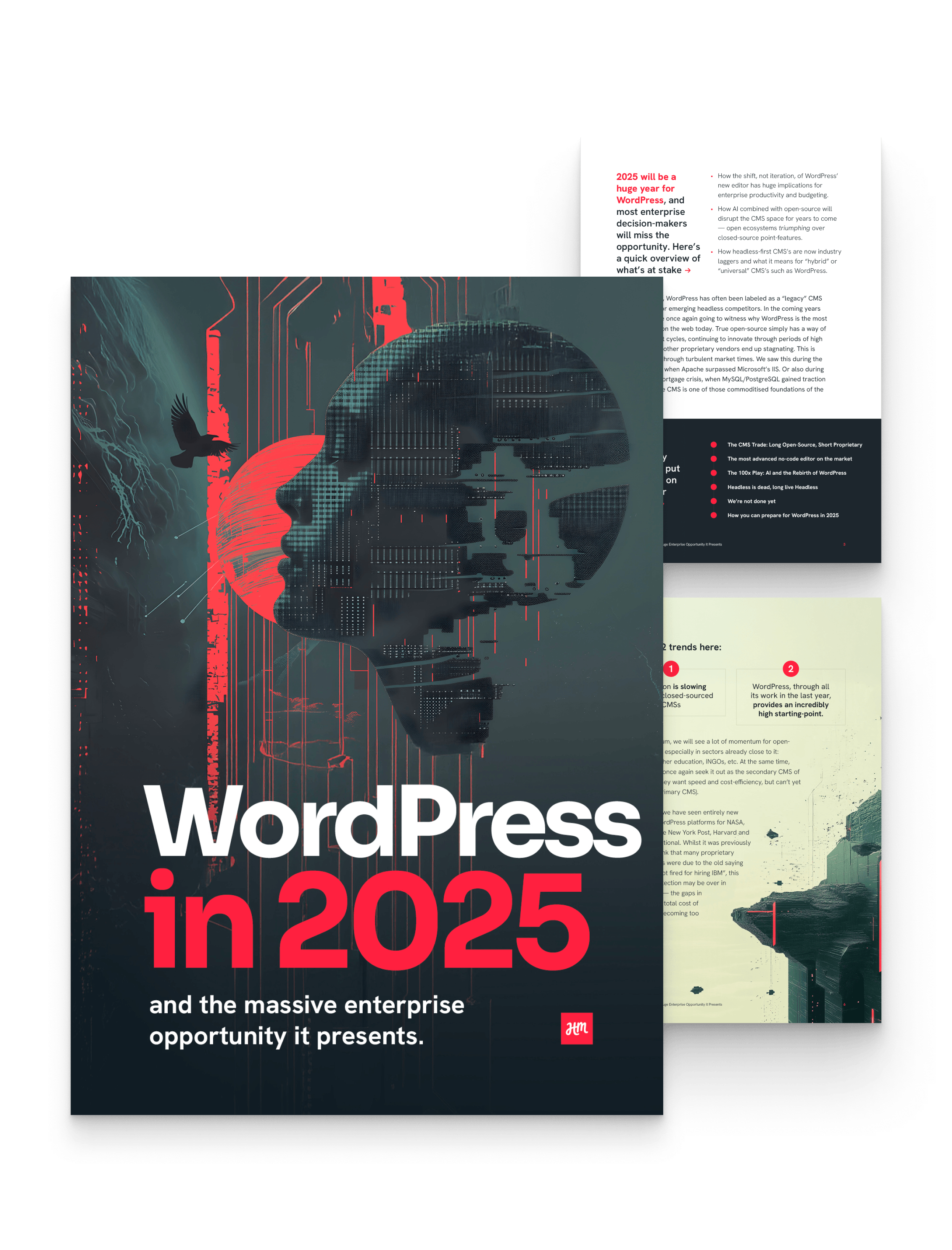The era of pure headless CMSs for complex sites is over. But now that the headless hype has worn off, what’s next for enterprise platforms? Enter hybrid solutions. WordPress, offering both traditional CMS-driven templates and headless capabilities, is the perfect solution.
In our latest guide, WordPress in 2025, we explore key trends shaping the CMS ecosystem, including the shift towards hybrid headless. We’re breaking down the benefits of adopting a hybrid headless CMS with WordPress and why it’s a strategic choice for enterprise businesses looking to optimise performance, cost, and flexibility.
1. Maximised budget efficiency
A fully headless build can be costly and resource-intensive. Hybrid headless solutions, like those powered by WordPress, allow businesses to allocate resources more effectively by using CMS-driven templates for the majority of their site while leveraging headless architecture for high-traffic, high-interactivity areas. This balance enables cost-effective content management without sacrificing performance or scalability.
2. Faster time-to-market for content creators
One of the major pitfalls of a pure headless approach is that it often requires extensive development resources, slowing down content production. WordPress, with its intuitive page-building capabilities and REST API, allows marketing teams and content creators to quickly produce and manage content without needing developer intervention. This reduces bottlenecks and ensures businesses can adapt swiftly to market demands.
3. Enhanced flexibility and scalability
With a hybrid approach, businesses can choose the right tool for the right job. WordPress provides robust templating for standard content needs, while its headless capabilities support high-performance, dynamic applications powered by frameworks like Next.js. This means businesses can scale their digital experiences without being locked into a restrictive system.
4. A future-proof CMS solution
Many pure headless CMS vendors are now scrambling to integrate traditional CMS features back into their offerings due to market demand. Platforms like Contentful, Sanity Studio, and dotCMS have had to adjust their strategies to enhance their block editor experiences. WordPress, on the other hand, has long supported both traditional and headless capabilities, making it a future-proof solution that adapts to evolving digital needs.

Leverage the best of both worlds with WordPress
The shift in the CMS landscape underscores the importance of flexibility. While pure headless CMS solutions once promised the future, they have struggled to deliver a balanced experience that serves both developers and content creators. WordPress, with its hybrid headless capabilities, offers the best of both worlds – providing a scalable, cost-effective, and user-friendly approach for enterprises in 2025.
Looking to implement a hybrid headless solution with WordPress? Our team of experts can help. Learn more about our headless services here.
Explore WordPress in 2025, the definitive enterprise guide
Discover how WordPress is transforming the enterprise landscape like never before, from getting ahead of market trends to capitalising on innovative features.

